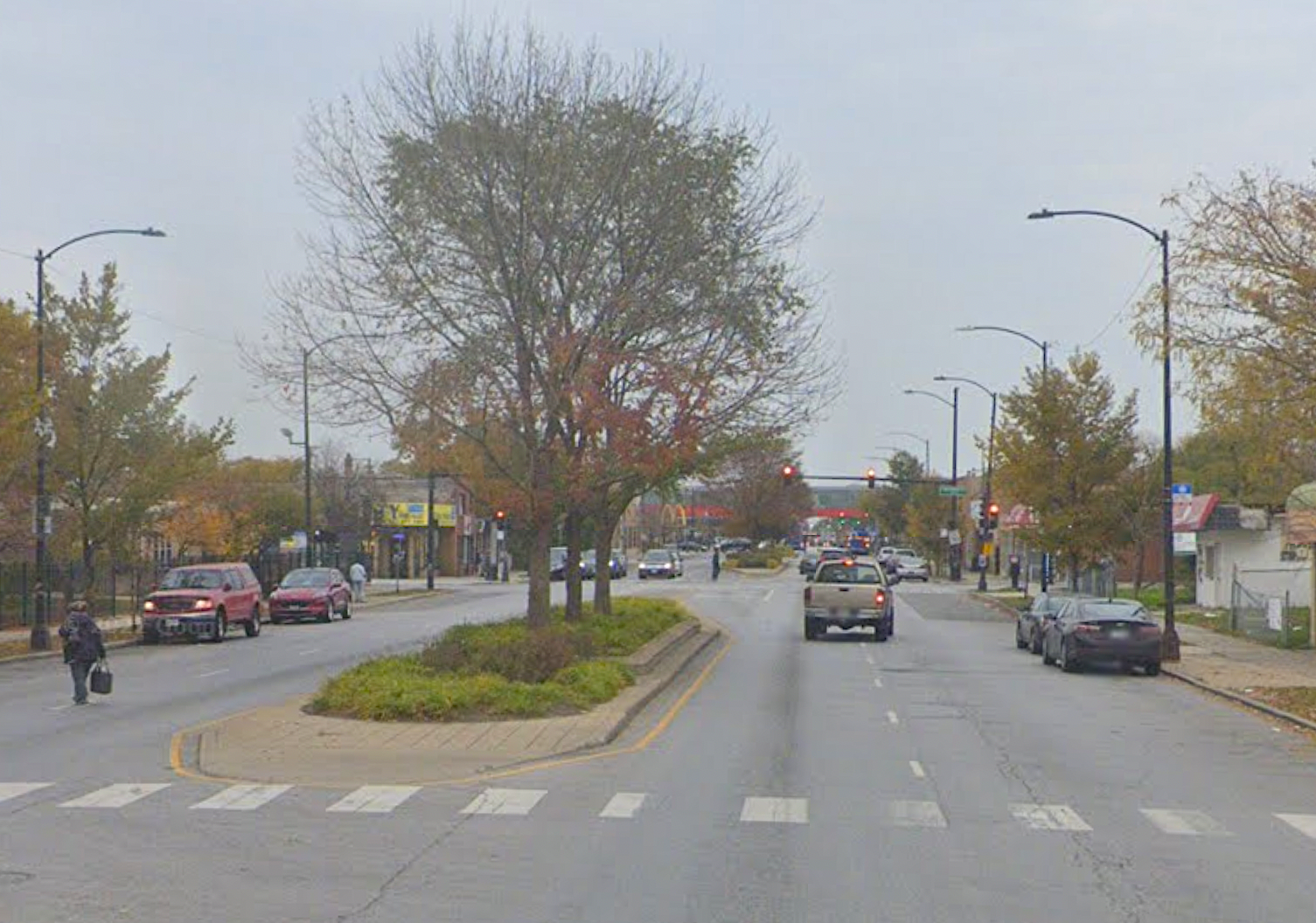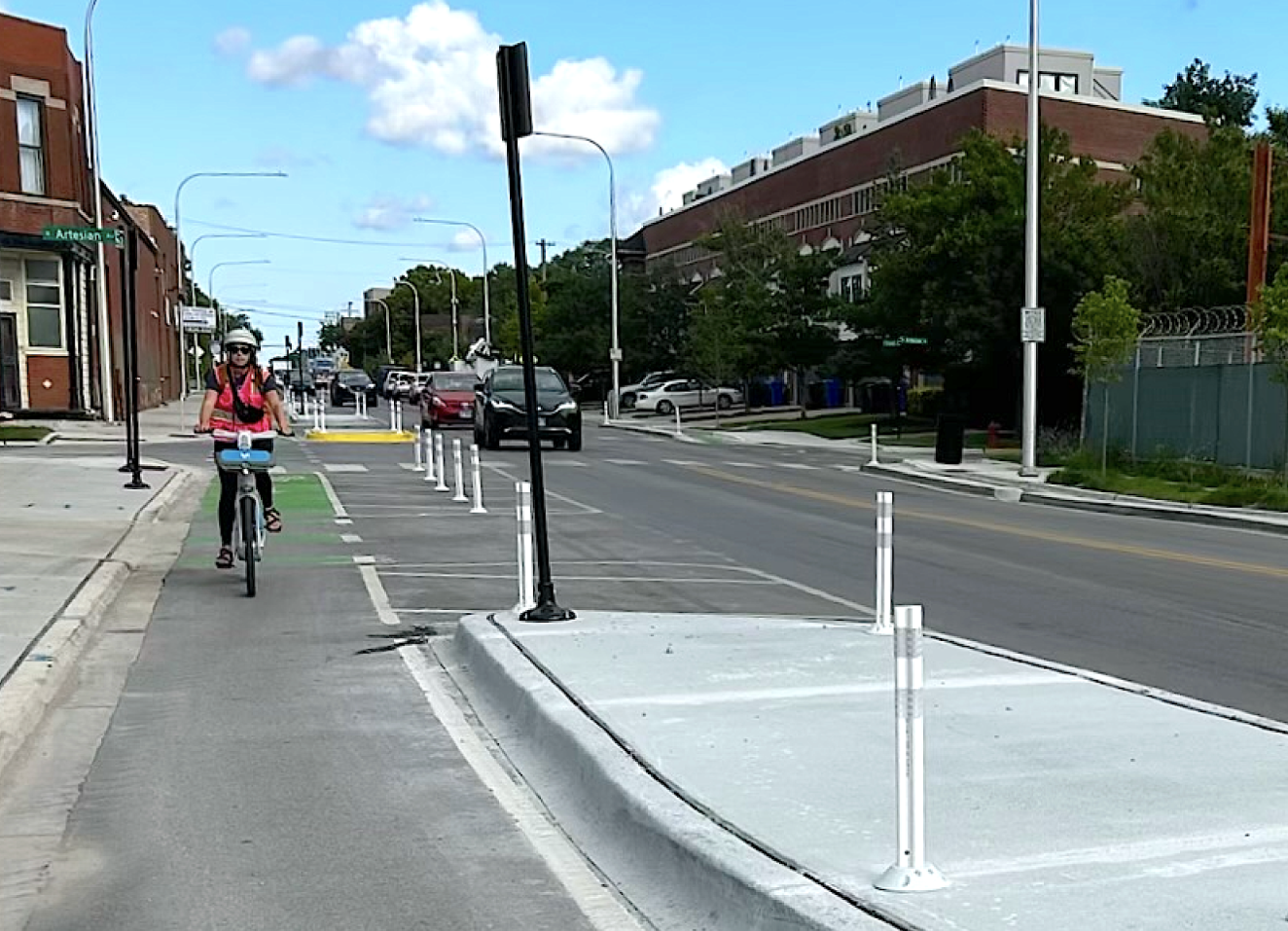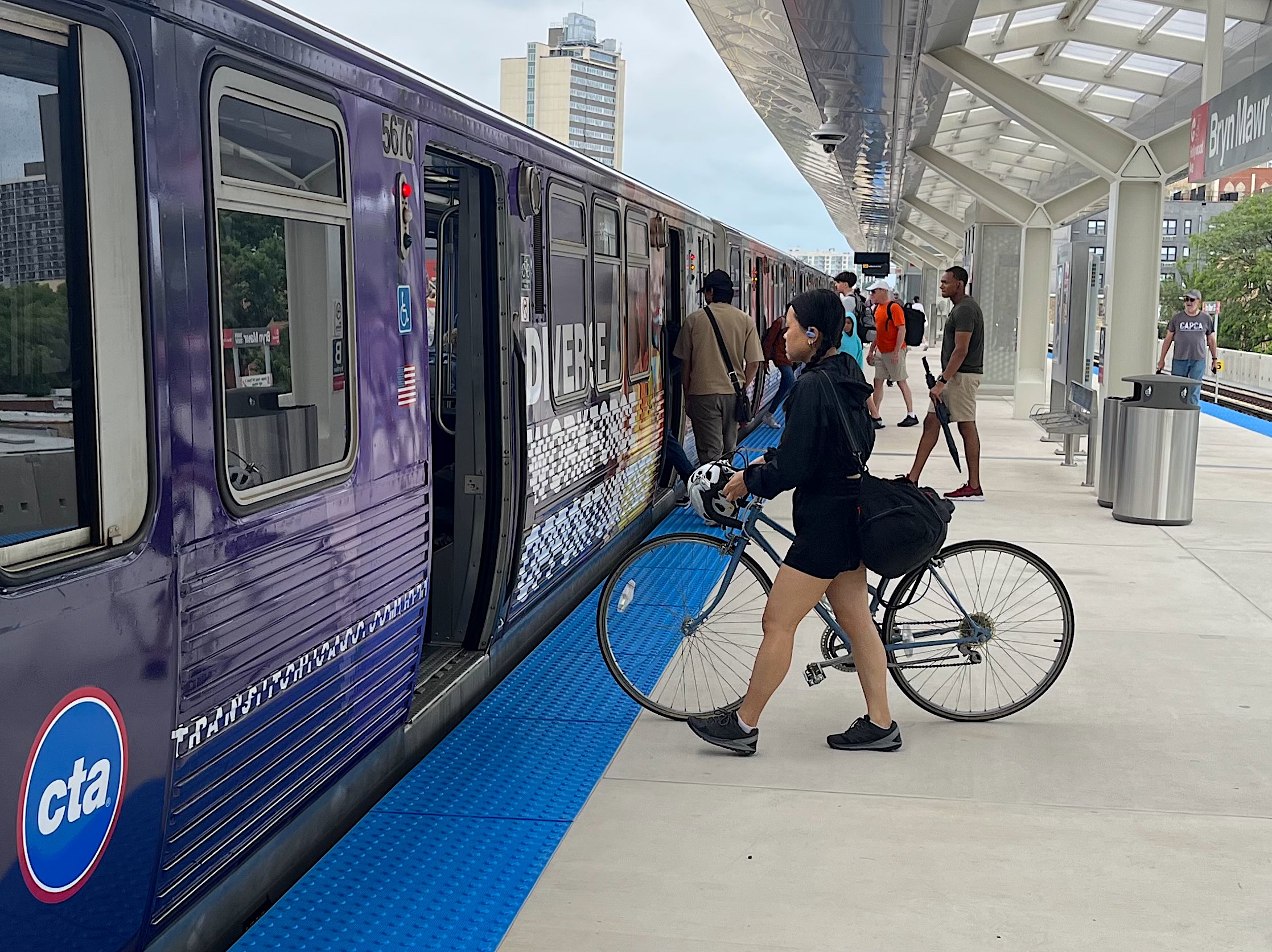
In some ways, today's CTA board meeting wasn't as dramatic as the May one. Unlike last month, Ald. David Moore (17th) wasn't there warning the directors that they would be "backbiting snakes" if they didn't support Mayor Brandon Johnson's pick for the new agency president. That person was the City's current chief operating officer John Roberson, the alder's former chief of staff.
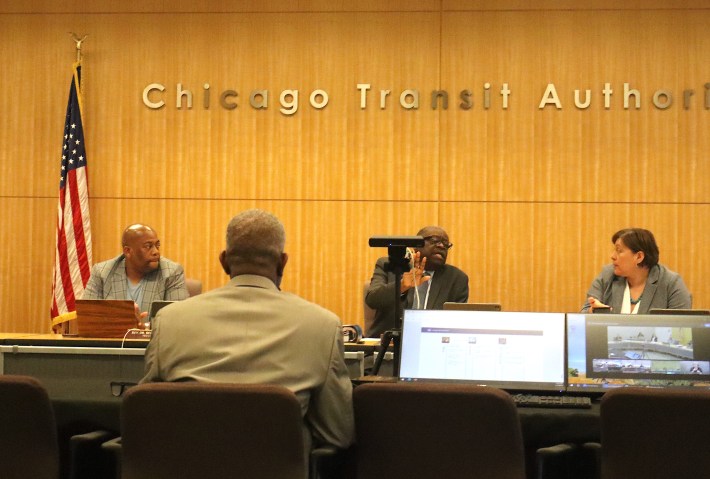
However, last Monday, the Obama Foundation announced it has hired Roberson as executive vice president for the Obama Center, starting July 7. Therefore, we can all rest assured that "SnakeGate" is no longer a thing.
There was no discussion at all of whom the next CTA president should be at today's hearing. But the session was still eventful, with the directors approving several new initiatives. Let's take a look.
Bus service changes
The board approved changes to three bus routes: two that serve the busy Pulaski Road corridor on the Southwest Side, and one that serves the California Avenue/Dodge Avenue corridor on the North Side and in Evanston.
Route 53/Pulaski, which currently doesn’t go south of 31st Street, will be extended to 76th Street, where it will head west to serve the Ford City Mall at Kostner Avenue.
Route 53A/South Pulaski, which currently starts at the 31st Street bus terminal and ends at 111th Street (115th Street on weekdays), will have its north terminal moved to the Pulaski Orange Line station at 51st Street. This means the two routes will now overlap between 31st and 76th, which CTA sees as a net positive. Southwest Side neighborhoods will get more frequent service, and it will be easier for riders on both routes to connect to the 'L'. The changes will kick in August 17.
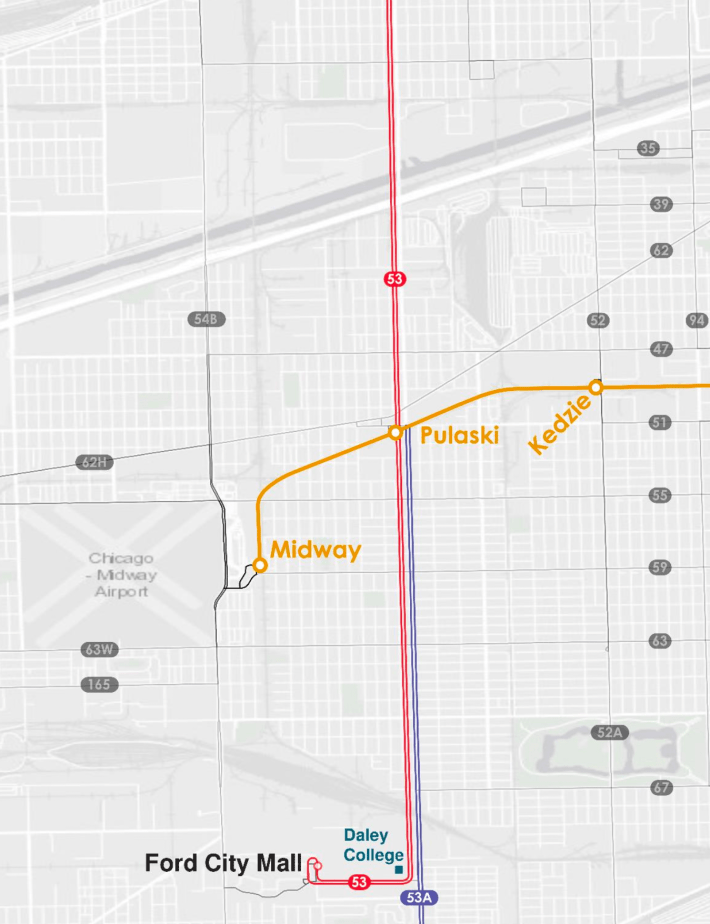
Route 53 is one of the Night Owl Service routes which provide limited overnight service. During those hours, that bus will only go as far as the Pulaski Orange Line station, but that's still 2.5 miles further south than its current terminus at 31st. Although the Orange Line doesn’t operate overnight, the change will provide a net increase in how much of Pulaski Road gets night service.
CTA Chief Innovations Officer Molly Poppe said that the improvements came out of a discussion with Richard J. Daley College, 7500 S. Pulaski Rd., which both routes serve, about improving the travel experience for its students. She said the city college even offered to let CTA use it as a terminal, but the transit agency declined. The agency projects the service improvements will bring in around 2,000 new daily riders and cost around $3.6 million to operate.

Route 93 California/Dodge currently runs between the Kimball Brown Line station on Lawrence Avenue and the Davis Street Purple Line stop. The latter serves as Evanston’s main bus hub, and is located next to Metra's eponymous Union Pacific North Line station. The bus route mostly runs along the street called California Avenue in Chicago and Dodge Avenue in Northwestern University's hometown.
The planned changes will happen in two phases. On August 17, the route will get Sunday service. And, sometime in December 2025, it will be extended south to the Logan Square Blue Line station.
Poppe said that modification was inspired by feedback CTA heard from 33rd Ward residents who complained about the service gap on the section of California Avenue between Addison Street and Lawrence. The newly realigned route will no longer stop at the Kimball station, instead taking Kedzie between Foster Avenue and Montrose Avenue. Riders will still be able to transfer to the Brown Line at the Kedzie stop.
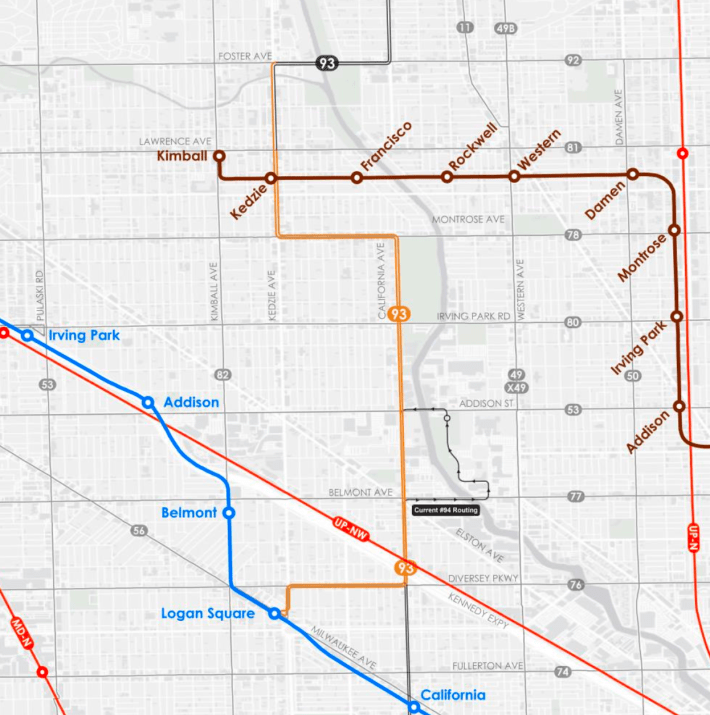
From there, the route will take Montrose Avenue to California to Diversey Parkway, and then basically follow the path of Route 76 Diversey to the Blue Line. This would notably improve connections between Albany Park, Avondale and Logan Square, and increase Sunday service in Evanston, where half of the CTA and Pace routes don’t run on Sundays. That's particularly an issue in parts of the suburb that aren't close to the Purple Line. Poppe said the California/Dodge changes are expected to bring in 1,000 new daily riders, and will cost the CTA around $2.2 million a year.
Poppe noted that money for service expansion was set aside in the agency's 2025 budget. She added that she took board members seriously when they asked for better service on the West Side. "This is something that’s always been in the back of my head, where we can improve services," she said.
Narcan vending machines contract
The board voted unanimously to approve an intergovernmental agreement with the Cook County Health system to install vending machines that dispense opioid overdose reversing Naloxone, better known by the trade name Narcan.
This was something the CTA and the West Side Heroin Opioid Task Force have been discussing since December 2023. This has been a personal issue for task force co-chair Sheila Haennicke. In November 2021, her son David died of an accidental overdose in 2021 while riding the Blue Line. Although he had Narcan in his pocket, there was no one on the scene who could use it. By the time EMTs arrived, he had already died.
During the May meeting, Haennicke asked the transit board whether the project had hit a roadblock. At the time, Acting CTA President Nora Leerhsen assured her that the planning process was simply taking longer than the agency expected, and that the matter would come before the board in June.
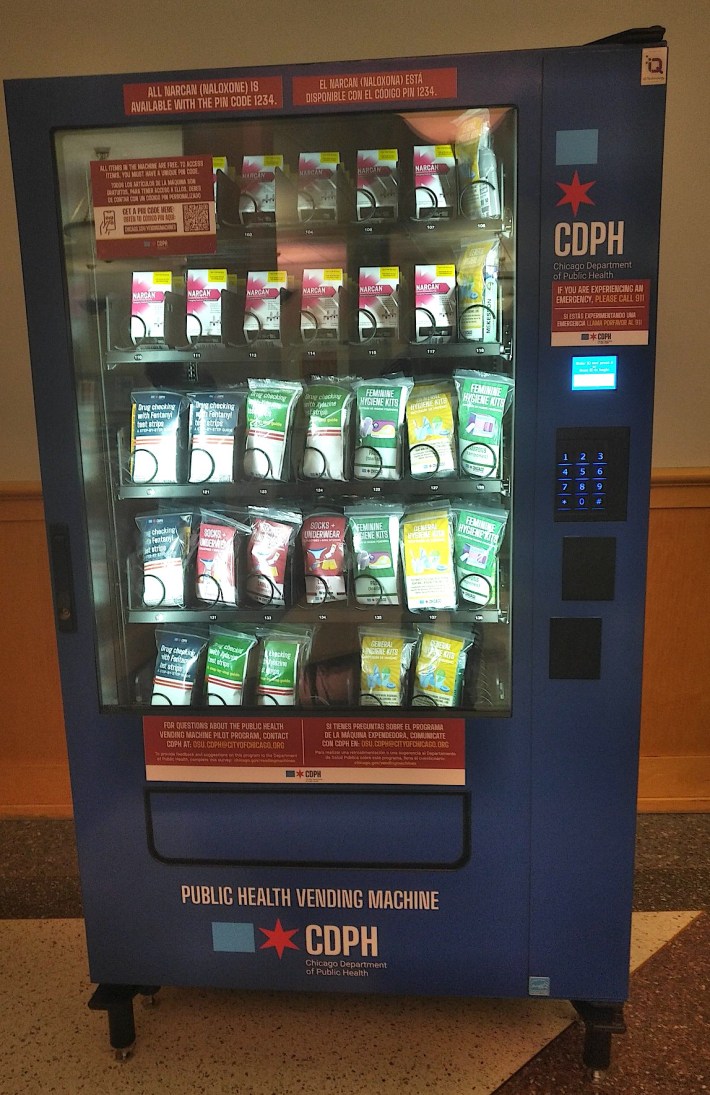
The machines will be placed at:
• The Jefferson Park Transit Center, which includes a bus terminal, a Blue Line station, and a Metra stop. Unhoused people often shelter in the corridor connecting different parts of the terminal.
• The Harlem/Lake Green Line station in Oak Park. The Forest Park, Oak Park, and River Forest police departments frequently get called to respond to opioid overdoses.
• The Howard Red/Purple/Yellow station. The Chicago Department of Public Health funds the the Night Ministry to do overnight outreach at the stop.
• The Central Park Pink Line station, the closest stop to the Lawndale Christian Health Center campus.
• The 47th Street Red Line station.
Denise Barreto, the CTA’s chief equity and engagement officer, told the board that Heroin Opioid Taskforce had a wishlist of nine stations, and that it wanted to cover the "Heroin Highway," a reference to opioid users, many from the suburbs, taking the Eisenhower Expressway to Chicago's West Side to buy opioids. Baretto said that CTA staff visited all of the proposed sites and ultimately selected the five stations based on the number of overdose calls. None of the Blue Line stations in the Eisenhower median ended up on the list.
Cook County Health will be responsible for restocking the machines. Baretto mentioned that CCH will work with the Chicago Recovery Alliance. "[They] will be a partner to make sure that Narcan is [refilled], and they will also provide office hours for us, to make sure there’s human touch," she said.
According to a CTA news release, the pilot will begin "late this fall" and run for six months, "with options to extend based on performance and community impact assessments."
Board member L. Bernard Jakes lauded Haennicke as the "epitome of turning pain into purpose." Director Roberto Requejo praised her for her tenacity. "I appreciate that [at] the last board meeting, Sheila was here, and at this board meeting, we’re making this happen," he said.
Other notable votes
The CTA Board also approved the transfer of the property north of the Garfield Green Line station to City Colleges of Chicago. The property was one of the parcels the agency used for staging shuttle buses during the Red Line South Reconstruction Project, completed in October 2023. Malcolm X College will use the land for its new South Campus, which will focus on healthcare classes.
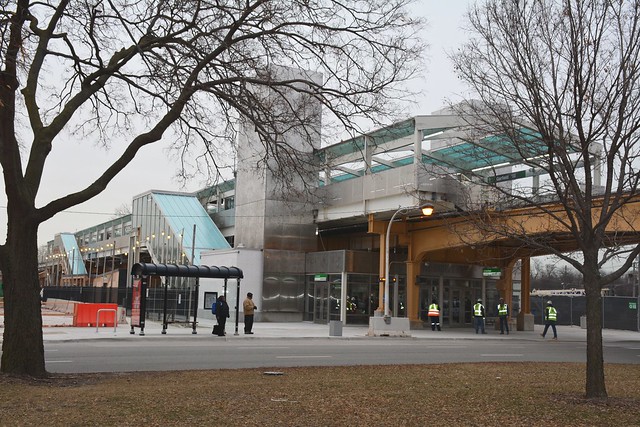
While the property is appraised at $370,000, no money has exchanged hands. Instead, CCC "will provide the equivalent value of the property in tuition credits to CTA employees over a five-year period," according to the press release.
The board also approved a pilot with Sensonic Incorporated to detect unauthorized people on 'L' tracks. Whether a person ends up on tracks on purpose or by accident, the CTA is required to shut down power to the third rail, which can result in long service disruptions. Sensonic's technology will use fiberoptic cables to track acoustic vibrations, use AI to figure out whether the vibrations were caused by a train or by a person and, if necessary, trigger an alert. The pilot will last a year, and CTA budgeted up to $110,700 for the test.

Did you appreciate this post? Streetsblog Chicago is currently fundraising to help cover our 2025-26 budget. If you appreciate our reporting and advocacy on local sustainable transportation issues, please consider making a tax-deductible donation here. Thank you!

